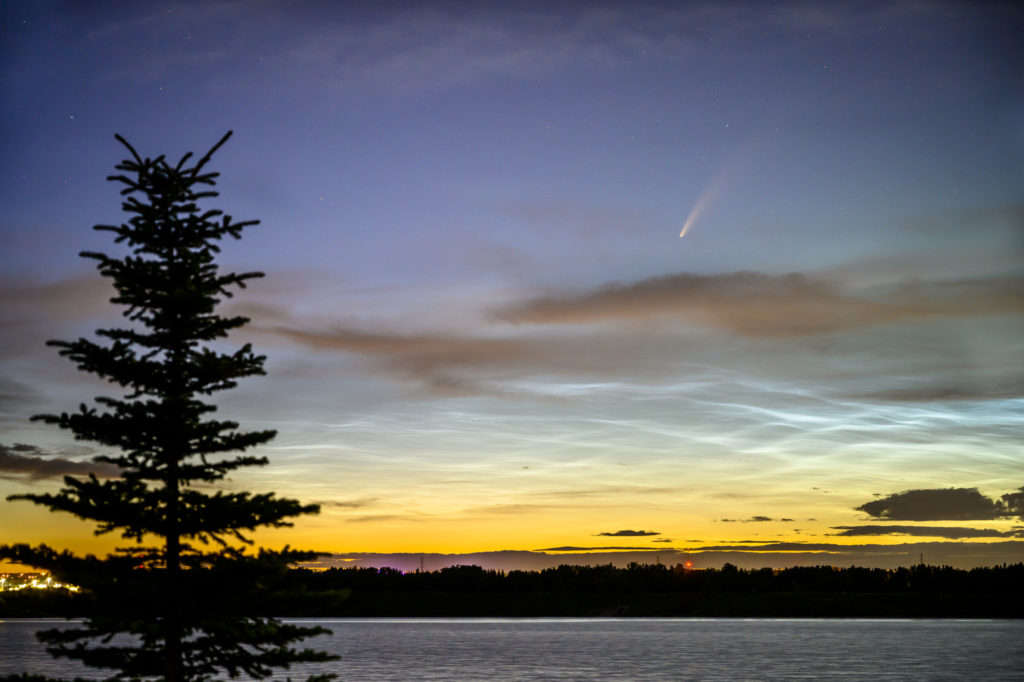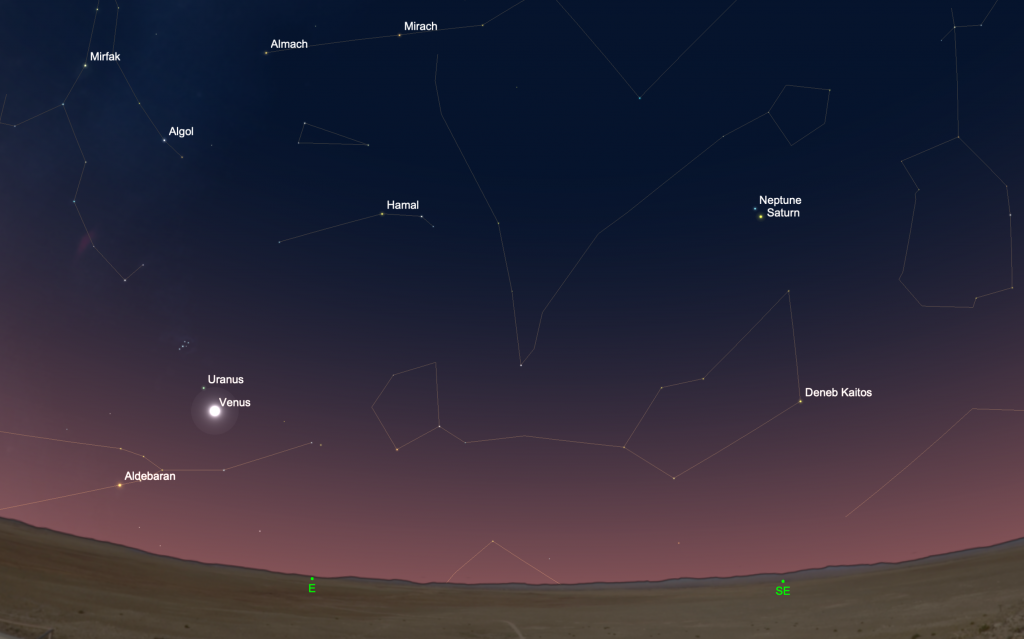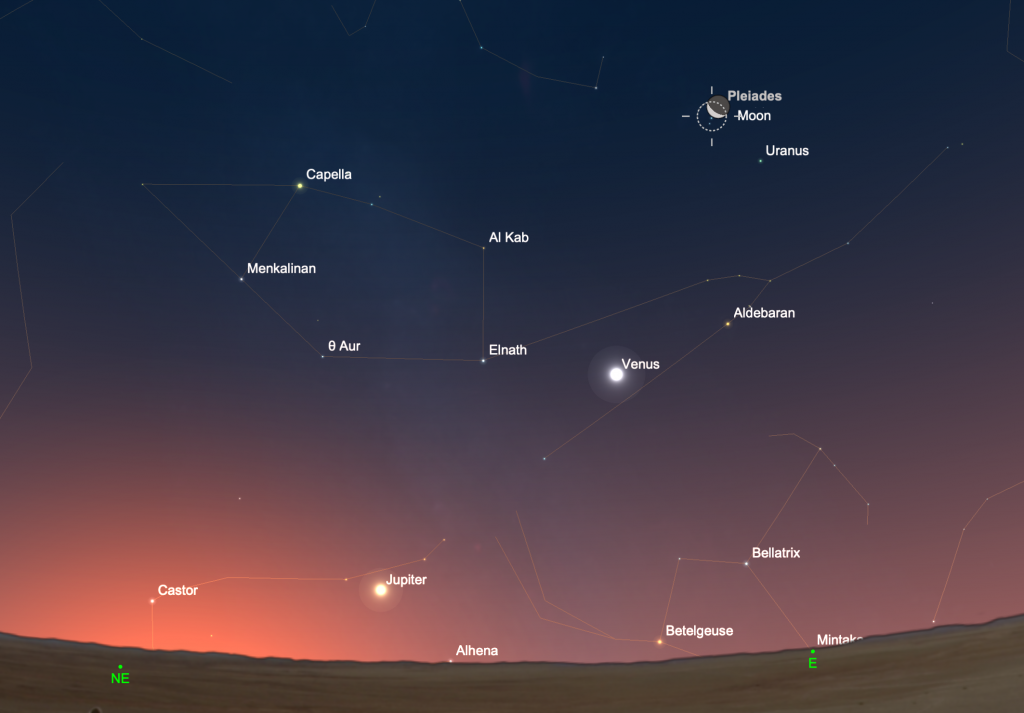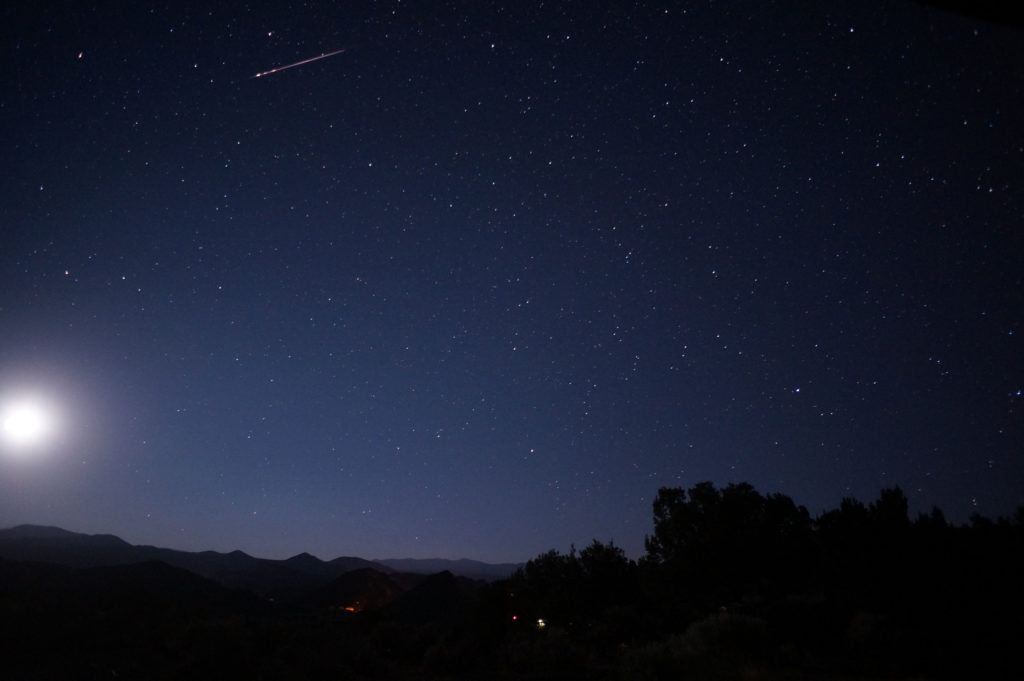The Night Sky This Month – June 2025

(Looking for last month’s ‘Night Sky’? Find it at this link…)
The Milky Way takes center stage as the new season gets underway, and deep-sky observers finally get to surf the hundreds of star clusters and nebulae along what the ancient Chinese poets called the ‘Silver River’. Mercury and Mars linger low in the west after sunset. Venus, Jupiter, Saturn, Uranus, and Neptune call to early-morning observers to look towards the eastern sky before sunrise. And, as the month comes to a close, a fine meteor shower sends tiny bits of celestial flotsam to burn up in our skies to the southeast. Here’s what’s in the night sky this month…
2 July 2025. First Quarter Moon, 19:30 UT
3 July. Earth reaches aphelion, its greatest distance from the Sun, at a distance of 152,087,376 km.

3 July. Grab a pair of binoculars or a wide-field telescope to see Mercury some 1.5o south of the Beehive star cluster (M44) in the evening twilight. Low over the horizon for northern observers, the planet is more easily visible during this apparition in the southern hemisphere. Tonight, the planet shines a magnitude +0.5 tonight but grows dimmer as it moves back towards the Sun in the latter half of July.
4 July. Uranus lies about 2o north of Venus in the morning before sunrise. Look for the pair with a pair of binoculars or a telescope with a sufficiently large field of view. Venus is now moving away from Earth and shrinking and growing slowly dimmer. Still, this morning, the planet shines at an impressive magnitude -4.1 and presents a thick gibbous disk in a scope. And here’s a fun fact about Uranus – this month it moves north of +20o declination for the first time since the mid-1950s!
4 July. Mercury reaches greatest eastern elongation at 26o from the Sun.

5 July. Neptune reaches its first stationary point and now starts moving (very slowly) westward against the background stars. Today it lies 1o north of Saturn in the morning sky. The pair fits nicely in the same field of view of a telescope.
7 July. Look for a fattening gibbous Moon just under 5o southeast of Antares at the heart of Scorpius.
10 July. Full Moon, 20:37 UT (the ‘Full Buck Moon’, or ‘Full Hay Moon’).
14 July. Saturn reaches its first stationary position in Pisces and now moves westward against the background stars each night. A mid-month, it rises near midnight local time. Now through the end of the year presents the best time to observe this ringed world as it slowly brightens and grows larger. The rings still appear as thin lines sticking out from the side of the planet, but their angle also slowly increases in the coming months and years. Saturn passes 4o south of the waning gibbous Moon on the 16th.
18 July. Last Quarter Moon, 00:38 UT

20 July. A thin Moon passes 0.8o north of the Pleiades low in the eastern sky before sunrise. Also look for brilliant Venus and Jupiter further towards the horizon.
24 July. New Moon, 19:11 UT.
26 July. A slender crescent Moon, just two days old, sinks after sunset towards the northwestern horizon about 2o behind Regulus, Leo’s brightest star.
28 July. Mars, now fading and heading out for the year, lies just over a degree north of the crescent Moon in the western sky after sunset. After its middling apparition earlier in the year, the planet moves closer to the Sun each night as it fades to magnitude +1.6. It serves as a curiosity now, an extra ‘star’ in Leo, but offers little to the telescopic observer until its next apparition in 2027.

29-31 July. The Delta Aquariid meteor shower peaks. This annual event favors observers in the southern hemisphere and southerly latitudes in the northern hemisphere, though all observers can see some of these slow-moving meteors. The Delta Aquariids appear to radiate from a point near the star Skat (delta Aquarii) in the constellation Aquarius. The shower peaks around July 29-30, but unlike most meteor showers, the Delta Aquariids lack a sharp maximum which means meteors are visible from mid-July through early August. The maximum hourly rate can reach 15-20 meteors in dark sky.